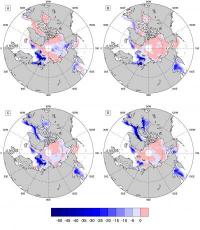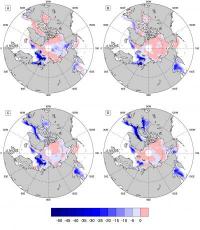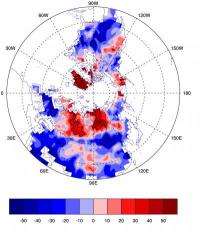 America’s Shell Production Is Leaping,... Wed Apr 24, 2024 05:29 | Anti-Empire America’s Shell Production Is Leaping,... Wed Apr 24, 2024 05:29 | Anti-Empire
 Ukraine Keeps Snapping Up Chinese Drones Tue Apr 23, 2024 03:14 | Anti-Empire Ukraine Keeps Snapping Up Chinese Drones Tue Apr 23, 2024 03:14 | Anti-Empire
 Moscow Is Prosecuting the War on a Pathe... Mon Apr 22, 2024 12:26 | Anti-Empire Moscow Is Prosecuting the War on a Pathe... Mon Apr 22, 2024 12:26 | Anti-Empire
 US Military Aid to Kiev Passes After Tru... Sun Apr 21, 2024 05:57 | Anti-Empire US Military Aid to Kiev Passes After Tru... Sun Apr 21, 2024 05:57 | Anti-Empire
 The Supreme Commander of the Ukrainian M... Sat Apr 20, 2024 01:38 | Anti-Empire The Supreme Commander of the Ukrainian M... Sat Apr 20, 2024 01:38 | Anti-Empire Anti-Empire >>
A Blog About Human Rights
 UN human rights chief calls for priority action ahead of climate summit Sat Oct 30, 2021 17:18 | Human Rights UN human rights chief calls for priority action ahead of climate summit Sat Oct 30, 2021 17:18 | Human Rights
 5 Year Anniversary Of Kem Ley?s Death Sun Jul 11, 2021 12:34 | Human Rights 5 Year Anniversary Of Kem Ley?s Death Sun Jul 11, 2021 12:34 | Human Rights
 Poor Living Conditions for Migrants in Southern Italy Mon Jan 18, 2021 10:14 | Human Rights Poor Living Conditions for Migrants in Southern Italy Mon Jan 18, 2021 10:14 | Human Rights
 Right to Water Mon Aug 03, 2020 19:13 | Human Rights Right to Water Mon Aug 03, 2020 19:13 | Human Rights
 Human Rights Fri Mar 20, 2020 16:33 | Human Rights Human Rights Fri Mar 20, 2020 16:33 | Human Rights Human Rights in Ireland >>
 New Scientific Evidence That CO2 Emissions Can?t Warm Atmosphere Because it is ?Saturated? Published... Wed Apr 24, 2024 08:00 | Chris Morrison New Scientific Evidence That CO2 Emissions Can?t Warm Atmosphere Because it is ?Saturated? Published... Wed Apr 24, 2024 08:00 | Chris Morrison
Further scientific evidence has emerged to suggest that the Earth?s atmosphere is 'saturated' with carbon dioxide, meaning that at higher levels the 'greenhouse' gas will not cause temperatures to rise.
The post New Scientific Evidence That CO2 Emissions Can’t Warm Atmosphere Because it is “Saturated” Published in Peer-Reviewed Journal appeared first on The Daily Sceptic.
 Nick Dixon and Toby Young Discuss Whether a Summer Election is Likely, Why so Many Tory MPs Turn Out... Wed Apr 24, 2024 07:00 | Toby Young Nick Dixon and Toby Young Discuss Whether a Summer Election is Likely, Why so Many Tory MPs Turn Out... Wed Apr 24, 2024 07:00 | Toby Young
In the latest Weekly Sceptic, the talking points are whether Rishi will go for a summer election, the Met refusing to let someone "openly Jewish" cross the road and why so many Tory MPs turn out to be wrong-uns.
The post Nick Dixon and Toby Young Discuss Whether a Summer Election is Likely, Why so Many Tory MPs Turn Out to be Wrong-Uns and Should Mark Rowley Resign? appeared first on The Daily Sceptic.
 News Round-Up Wed Apr 24, 2024 00:49 | Richard Eldred News Round-Up Wed Apr 24, 2024 00:49 | Richard Eldred
A summary of the most interesting stories in the past 24 hours that challenge the prevailing orthodoxy about the ?climate emergency?, public health ?crises? and the supposed moral defects of Western civilisation.
The post News Round-Up appeared first on The Daily Sceptic.
 Massive Climbdown From WHO as Latest Draft of IHR Amendments Drops Almost All Offending Aspects Tue Apr 23, 2024 19:30 | Will Jones Massive Climbdown From WHO as Latest Draft of IHR Amendments Drops Almost All Offending Aspects Tue Apr 23, 2024 19:30 | Will Jones
The just-released draft of the International Health Regulations amendments from the WHO Working Group shows a massive climbdown in almost all areas of concern, according to UsForThem.
The post Massive Climbdown From WHO as Latest Draft of IHR Amendments Drops Almost All Offending Aspects appeared first on The Daily Sceptic.
 We?re Hiring Tue Apr 23, 2024 17:30 | Will Jones We?re Hiring Tue Apr 23, 2024 17:30 | Will Jones
The Daily Sceptic is currently looking for a new Associate Editor to take the lead in running and hosting the new Weekly Round-Up podcast, as well as writing for the site. Details here.
The post We’re Hiring appeared first on The Daily Sceptic. Lockdown Skeptics >>
Voltaire, international edition
 Israel's complex relations with Iran, by Thierry Meyssan Wed Apr 24, 2024 05:25 | en Israel's complex relations with Iran, by Thierry Meyssan Wed Apr 24, 2024 05:25 | en
 Iran's hypersonic missiles generate deterrence through terror, says Scott Ritter... Mon Apr 22, 2024 10:37 | en Iran's hypersonic missiles generate deterrence through terror, says Scott Ritter... Mon Apr 22, 2024 10:37 | en
 When the West confuses Law and Politics Sat Apr 20, 2024 09:09 | en When the West confuses Law and Politics Sat Apr 20, 2024 09:09 | en
 The cost of war, by Manlio Dinucci Wed Apr 17, 2024 04:12 | en The cost of war, by Manlio Dinucci Wed Apr 17, 2024 04:12 | en
 Angela Merkel and François Hollande's crime against peace, by Thierry Meyssan Tue Apr 16, 2024 06:58 | en Angela Merkel and François Hollande's crime against peace, by Thierry Meyssan Tue Apr 16, 2024 06:58 | en Voltaire Network >>
|
Search author name words: d
Study: Arctic sea ice decline may be driving snowy winters seen in recent years
 international |
environment |
press release international |
environment |
press release
 Tuesday February 28, 2012 14:43 Tuesday February 28, 2012 14:43 by Judith Curry - Georgia Institute of Technology by Judith Curry - Georgia Institute of Technology

A new study led by the Georgia Institute of Technology provides further evidence of a relationship between melting ice in the Arctic regions and widespread cold outbreaks in the Northern Hemisphere. The study's findings could be used to improve seasonal forecasting of snow and temperature anomalies across northern continents.
Since the level of Arctic sea ice set a new record low in 2007, significantly above-normal winter snow cover has been seen in large parts of the northern United States, northwestern and central Europe, and northern and central China. During the winters of 2009-2010 and 2010-2011, the Northern Hemisphere measured its second and third largest snow cover levels on record.
"Our study demonstrates that the decrease in Arctic sea ice area is linked to changes in the winter Northern Hemisphere atmospheric circulation," said Judith Curry, chair of the School of Earth and Atmospheric Sciences at Georgia Tech. "The circulation changes result in more frequent episodes of atmospheric blocking patterns, which lead to increased cold surges and snow over large parts of the northern continents."
 These maps show the differences in snow cover relative to the long-term average for the winters of (left) 2009-2010 and (right) 2010-2011. During these two winters, the Northern Hemisphere measured its second and third largest snow cover levels on record. The study was published on Feb. 27, 2012 in the online early edition of the journal Proceedings of the National Academy of Sciences. The research was supported by NASA and the National Science Foundation.
In this study, scientists from Georgia Tech, the Chinese Academy of Sciences and Columbia University expanded on previous research by combining observational data and model simulations to explore the link between unusually large snowfall amounts in the Northern Hemisphere in recent winters and diminishing Arctic sea ice.
The researchers analyzed observational data collected between 1979 and 2010 and found that a decrease in autumn Arctic sea ice of 1 million square kilometers -- the size of the surface area of Egypt -- corresponded to significantly above-normal winter snow cover in large parts of the northern United States, northwestern and central Europe, and northern and central China.
The analysis revealed two major factors that could be contributing to the unusually large snowfall in recent winters -- changes in atmospheric circulation and changes in atmospheric water vapor content -- which are both linked to diminishing Arctic sea ice. Strong warming in the Arctic through the late summer and autumn appears to be enhancing the melting of sea ice.
"We think the recent snowy winters could be caused by the retreating Arctic ice altering atmospheric circulation patterns by weakening westerly winds, increasing the amplitude of the jet stream and increasing the amount of moisture in the atmosphere," explained Jiping Liu, a senior research scientist in the School of Earth and Atmospheric Sciences at Georgia Tech. "These pattern changes enhance blocking patterns that favor more frequent movement of cold air masses to middle and lower latitudes, leading to increased heavy snowfall in Europe and the Northeast and Midwest regions of the United States."
Diminishing Arctic sea ice can cause changes in atmospheric circulation that lead to a circulation pattern that is different than the "negative phase" of the Arctic Oscillation.
In addition to analyzing observational data, the researchers also assessed the impact of the diminishing Arctic sea ice on atmospheric circulation by comparing the results of model simulations run with different sea ice distribution. They ran one experiment that assumed seasonally varying Arctic sea ice and utilized sea ice concentration data collected between 1979 and 2010. Another simulation incorporated prescribed sea ice loss in autumn and winter based on satellite-derived Arctic sea ice concentrations.
The simulations showed that diminishing Arctic sea ice induced a significant surface warming in the Arctic Ocean and Greenland/northeastern Canada, and cooling over northern North America, Europe, Siberia and eastern Asia. The models also showed above-normal winter snowfall in large parts of the northern United States, central Europe, and northern and central China.
The consistent relationships seen in the model simulations and observational data illustrate that the rapid loss of sea ice in summer and delayed recovery of sea ice in autumn modulates snow cover, winter temperature and the frequency of cold air outbreaks in northern mid-latitudes.
Huijun Wang and Mirong Song of the Chinese Academy of Sciences Institute of Atmospheric Physics and Radley Horton from the Columbia University Center for Climate Systems Research also contributed to this work.
Impact of declining Arctic sea ice on winter snowfall.
Abstract: http://www.pnas.org/content/early/2012/02/17/1114910109
This article contains supporting information online at www.pnas.org/lookup/suppl/doi:10.1073/pnas.1114910109/-/DCSupplemental.

These maps show the differences in Arctic sea ice concentration relative to the long-term average for the winters of (A) 2007-2008, (B) 2008-2009, (C) 2010-2011 and (D) 2010-2011. The lowest levels of Arctic sea ice have been measured between 2007 and 201

This map shows the percent change in winter blockings relative to the long-term average. Blocking patterns favor more frequent movement of cold air masses to middle and lower latitudes, leading to increased heavy snowfall in Europe and the Northeast and M
|
 international |
environment |
press release
international |
environment |
press release
 Tuesday February 28, 2012 14:43
Tuesday February 28, 2012 14:43 by Judith Curry - Georgia Institute of Technology
by Judith Curry - Georgia Institute of Technology



























 printable version
printable version

 Digg this
Digg this del.icio.us
del.icio.us Furl
Furl Reddit
Reddit Technorati
Technorati Facebook
Facebook Gab
Gab Twitter
Twitter